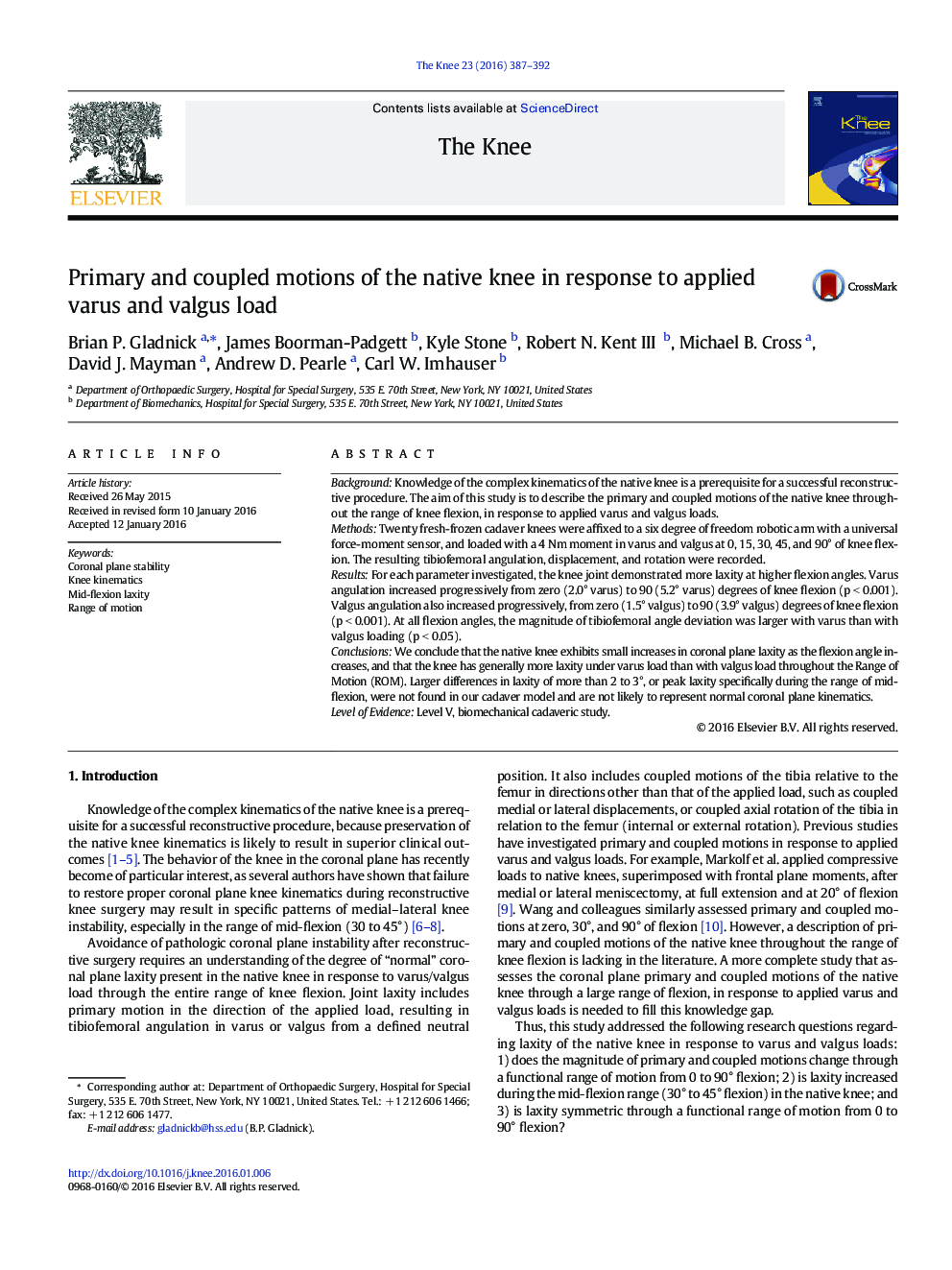| کد مقاله | کد نشریه | سال انتشار | مقاله انگلیسی | نسخه تمام متن |
|---|---|---|---|---|
| 6211113 | 1267205 | 2016 | 6 صفحه PDF | دانلود رایگان |
- Twenty cadaver knees were affixed to a robot, and loaded with varus/valgus moments.
- The resulting tibiofemoral angulation, displacement, and rotation were recorded.
- Knees exhibit small increases in coronal laxity as the flexion angle increases.
- Knees had generally more laxity under varus load than with valgus load.
BackgroundKnowledge of the complex kinematics of the native knee is a prerequisite for a successful reconstructive procedure. The aim of this study is to describe the primary and coupled motions of the native knee throughout the range of knee flexion, in response to applied varus and valgus loads.MethodsTwenty fresh-frozen cadaver knees were affixed to a six degree of freedom robotic arm with a universal force-moment sensor, and loaded with a 4 Nm moment in varus and valgus at 0, 15, 30, 45, and 90° of knee flexion. The resulting tibiofemoral angulation, displacement, and rotation were recorded.ResultsFor each parameter investigated, the knee joint demonstrated more laxity at higher flexion angles. Varus angulation increased progressively from zero (2.0° varus) to 90 (5.2° varus) degrees of knee flexion (p < 0.001). Valgus angulation also increased progressively, from zero (1.5° valgus) to 90 (3.9° valgus) degrees of knee flexion (p < 0.001). At all flexion angles, the magnitude of tibiofemoral angle deviation was larger with varus than with valgus loading (p < 0.05).ConclusionsWe conclude that the native knee exhibits small increases in coronal plane laxity as the flexion angle increases, and that the knee has generally more laxity under varus load than with valgus load throughout the Range of Motion (ROM). Larger differences in laxity of more than 2 to 3°, or peak laxity specifically during the range of mid-flexion, were not found in our cadaver model and are not likely to represent normal coronal plane kinematics.Level of EvidenceLevel V, biomechanical cadaveric study.
Journal: The Knee - Volume 23, Issue 3, June 2016, Pages 387-392
